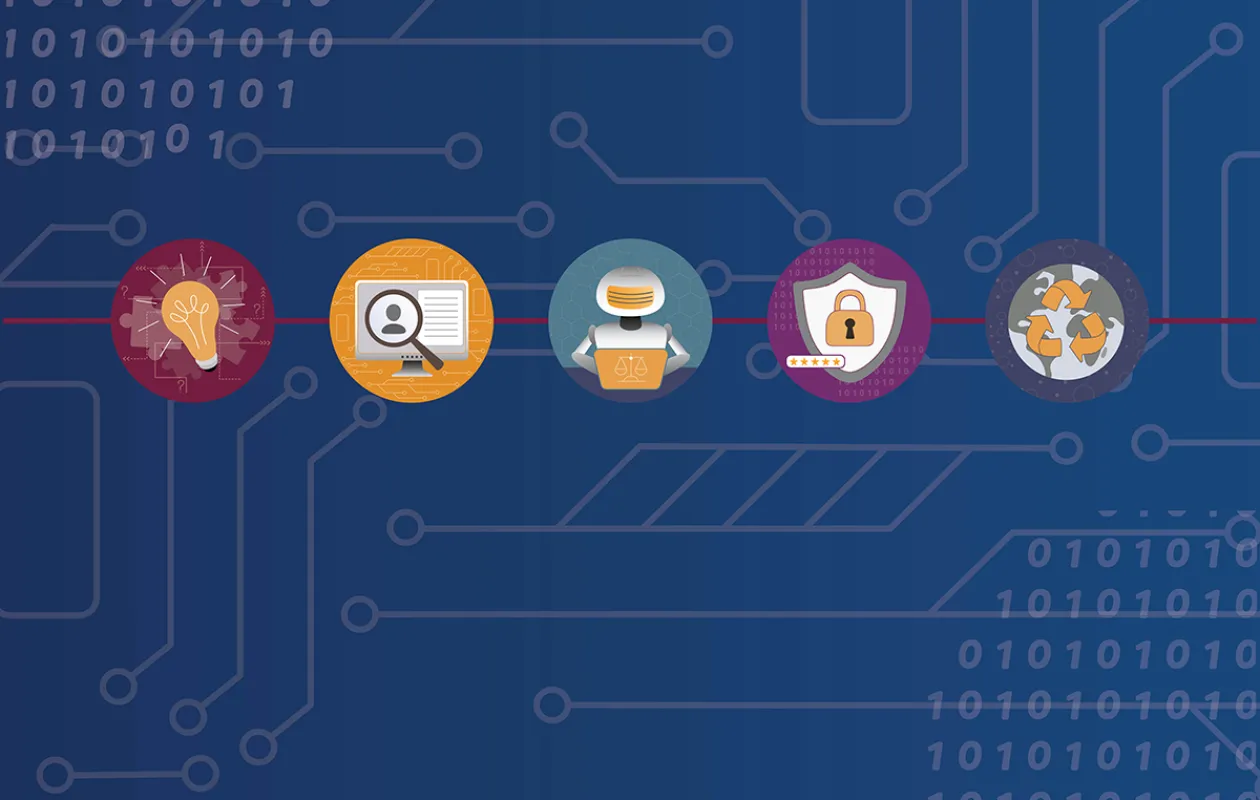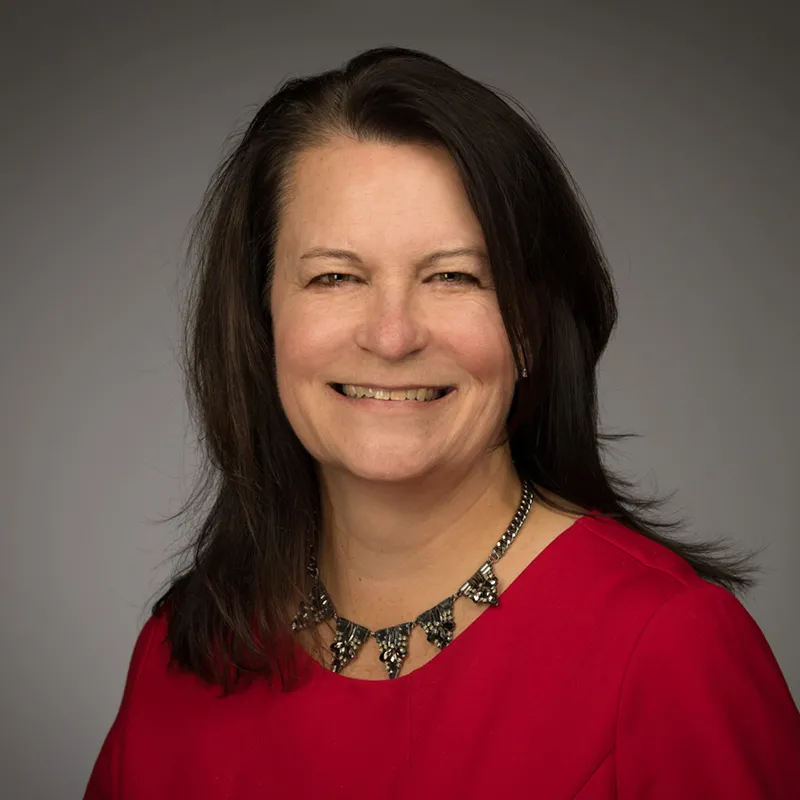
Amy (Braley) Wilson, ’95, remembers it well: that day several years ago when information relating to Dow’s quarterly earnings release was inadvertently sent to a reporter two days before the scheduled date.
“The dates for reporting earnings are announced in advance, and there are a lot of good compliance reasons why that happens,” says Wilson, general counsel and corporate secretary at Dow, one of the world’s largest chemical producers. The email misfire set off a scramble to respond rapidly, with little room for error and not a moment to spare.
“It meant getting people from legal, finance, investor relations, public affairs, and our leadership—including our board—involved in coming up with a plan. We discussed what exactly happened, what all the options were, what we would recommend, and how to make it happen within a matter of, really, minutes.”
The situation was effectively resolved: The team moved up the date and announced results before the market opened the next morning. While stressful, the situation also demonstrates how a general counsel can play a critical role in rallying a team to solve a problem on a tight timeline.
“Not only did we learn what we were capable of,” says Wilson, “but we also learned that we can trust and rely on each other.”
Problem solving is part and parcel for every general counsel (GC), a position with a vital set of responsibilities. Traditionally, GCs were relegated to a niche role that addressed the specific legal needs of an organization—such as overseeing litigation, executing contracts, or advising on legal risk. But the role has transformed during the past few decades. Today’s typical GC not only advises on the law but also understands and shapes the organization’s strategy as an integral member of the C-suite.
In other words, GCs need to know how the law touches the business and how the business touches the law—and how to use those insights to help steer their organization to success.
“If you go back a few decades, the general counsel was someone you consulted when you needed to,” says Michele Coleman Mayes, ’74, vice president, general counsel, and secretary at the New York Public Library. “But savvy clients quickly learn that if they involve the attorney early, then that attorney is more able to devise creative ways to accomplish the business objective.”
She provides an example from when she worked for a consumer products company and a situation arose that made the leadership question whether a vendor had violated the company’s trademark. “I said, ‘Of course they have. But are you going to sue them when they’re one of your biggest customers?’ The CEO paused and said, ‘Probably not.’ That wasn’t a legal question; they had to figure out a different strategy to deal with the vendor.”
Removing GCs from their silos within the organization also allows them to establish a deeper knowledge of the organization, says Julie Chen, ’91, general counsel of the anti-poverty nonprofit Share Our Strength. “It is great in the sense that you have one client that you really know inside and out and that you can grow with and feel an affinity for.”
That knowledge sharing is two-way when it comes to training other staff in the areas of the law that apply to their specific work.
“Training your departments is so key,” she says. “I found that, across the board, training the non-lawyer team as to why certain rules exist has saved me a lot of time and also generates appreciation. What you don’t want is in-house counsel to be viewed as the ‘no’ person.”
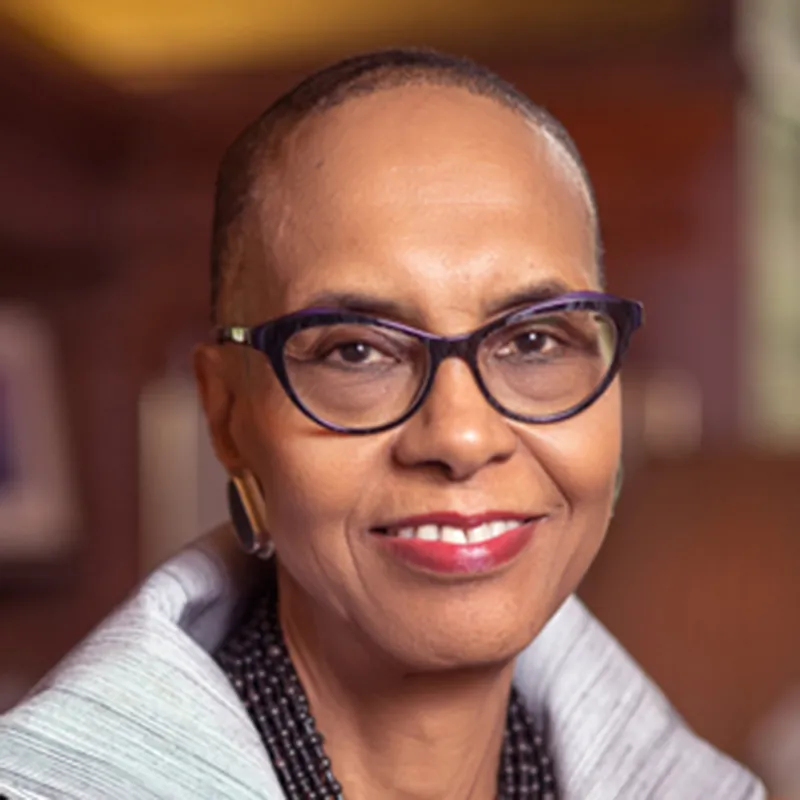
Connecting the Dots
The role of a GC is multidimensional, responsible for connecting the dots across the organization and understanding where the organization is within simultaneous frameworks, from business to legal to regulatory and beyond. Typically, the emphasis is more on breadth than depth.
“Some people really like knowing more about a particular topic, a particular issue than anybody else,” says Jim Shaughnessy, ’79, chief legal officer at DocuSign, a provider of software for electronic signatures. “Those people are probably not going to be happy as general counsel. Instead, we develop a map of the issues that are important to the company and make sure that we have each of those areas covered.”
To meet that need, the GC of a large organization might oversee a legal department that includes a range of experts in various areas of the law. GCs need to be comfortable with the fact that they, themselves, cannot be experts in every area of the law that might come across their desk.
For Ann Chen, ’03, assistant general counsel at information and technology services company TransUnion, working across a wide range of issues is one of the best parts of the job. “I love the variety and don’t think I can go back to focusing on just one thing. It also helps to understand when you are out of your depth and be able to find trusted experts—whether they are in your company or experienced outside counsel, or you are benchmarking with other experienced in-house counsel.”
One of the GC’s most important responsibilities is finding a balance that is efficient, cost effective, and reactive to the needs of their organization.
“We have a combination of specialists and generalists in the department,” says Rhonda Powell, ’93, chief legal officer and corporate secretary at BuzzFeed, a digital media company that went public through a special purpose acquisition company (SPAC) merger last year. “Generalists can cover a broad range of matters, like negotiation and drafting of commercial agreements and corporate transactional documents. Specialists, like our privacy and regulatory lead attorney, have depth and wealth of knowledge in specific areas of the law.”
But few, if any, departments have either the budget or the bandwidth to accommodate every situation that might arise. At that point, a GC will know that it’s time to look to outside resources.
“There are different circumstances where we might reach out to outside counsel,” says Powell. “One is if we simply don’t have the expertise internally and we feel that that expertise is necessary. Often, that’s not formal, just a phone call, a consultation, a brief interaction with someone who has the expertise and points us in the right direction.”
However, when BuzzFeed was preparing for its SPAC merger, outside counsel was vital due to the complex nature of the transaction, the volume of documentation that had to be generated, the need to coordinate and align on SEC filings with the SPAC partner, and the critical timing involved.
“We have lots of staff who have strong corporate backgrounds, including myself. But in terms of the resources that you need to get a truly transformative corporate transaction done, I don’t know of a company that’s doing that just with their in-house legal department.”
Working within the federal government makes for a very different model of engaging outside counsel, says Steven Bressler, ’01, acting deputy general counsel for litigation oversight at the Consumer Financial Protection Bureau (CFPB). Generally, the Department of Justice is outside counsel and handles all litigation.
“However, the CFPB is one of a handful of agencies where Congress has provided independent litigating authority, so we represent ourselves,” says Bressler. On the infrequent occasions when his team does need outside expertise, it does look to other government agencies. And that works both ways—other agencies can call on the CFPB for its expertise in specific areas of the law.
“There is such a breadth of expertise and knowledge and experience within the federal government that usually we can get the expertise we are looking for by going to the Department of Justice or another agency,” Bressler notes.
Whether in the government, corporate, or nonprofit world, the role of general counsel continues to evolve and grow. And while the challenges and opportunities they face on a daily basis could fill a book, we outline a few of those on the following pages.

A Portfolio of HR Issues
Human resources and in-house counsel have traditionally been strong partners, working together to resolve disputes, conduct internal investigations, develop policy guidelines, and oversee employee training on matters like sexual harassment and data privacy. Additionally, an organization’s legal team is often tasked with keeping current on the status of legislation that can affect human resources (like the current discussions around paid parental leave, for example). All in all, they have a fairly wide-ranging portfolio of HR issues—and that was before COVID introduced a slew of new questions GCs have had to face.
The impact of the pandemic and the speed with which it occurred have required in-house counsel to collaborate with human resources departments to address issues such as masking and vaccine requirements, reasonable accommodations, and work-from-home policies.
It has been a challenging period, but some silver linings have appeared. Discussions around employee mental health, for example, are no longer spoken in hushed tones.
“For a long time, it was unheard of in our profession to talk to employees about their personal circumstances, about their mental health,” says Dow’s Wilson. “We did not talk about well-being and focused on treating everyone consistently—that comes right out of legal’s playbook.” However, Dow made policy changes related to employee mental health during the pandemic that have since been made permanent.
“The leader-employee dynamic changed in a really positive way. We had some people who were naturals at that. But we had others who were very uncomfortable with it. For them, if the commitment we ask of leaders has changed and that wasn’t what they signed up for, we can accommodate that, too, and we’ll have them do something else.”
While many questions have been addressed over the past two years, some issues remain unresolved, including what to do about employees who shifted to remote work during the pandemic and are now living and working from new locations.
“Before, you might have been subject to four states’ jurisdiction because your headquarters are here and you have an office here and here and here,” says Julie Chen, of Share Our Strength. “All of a sudden, post-pandemic, your employees are everywhere.” She remembers suddenly seeing continuing legal education courses with titles such as Your Stealth Employee, which addressed situations where employees of a New York company, for example, decided to work remotely from a beach in California. The tax implications and compliance with laws of various localities will continue to vex GCs in the near term.
“You’re subjecting yourself to all 50 states, potentially,” says Chen. “And then we have to rein in some of those who want to work overseas. I think a lot of organizations are facing what their workforce of today looks like.”

A Digital Transformation
While the pandemic accelerated the transition to some digital modes of work, information technology has been on the rise in the legal field for decades. Established technologies are capable of automating processes involved in accounting and other business matters, document management, discovery, and legal research.
Shaughnessy, the chief legal officer at DocuSign, has worked in the technology field for more than 30 years and is well aware of the impact new tech can have on the way GCs do their work.
“One of the principal organizational imperatives during my entire career—not just business but public sector as well—has been on digital transformation, which I define as the use of information technology to improve organizational outcomes and efficiency,” he says. “It’s an important topic for general counsel because we need to understand how technology is impacting our businesses and make sure we’re using it effectively and compliantly in all aspects of our operation.”
One emerging technology that could become more widespread in the coming years, Shaughnessy says, is machine learning that uses natural language processing to improve the legal writing process. (Full disclosure: He advises a small company in this field.) This would allow lawyers to cite-check their documents using the software rather than doing it manually, freeing them up to do “more interesting and better work,” he adds.
Another way GCs benefit from legal technology is through their vendors.
“We’re finding that a lot of our service providers already are leveraging technology in a way that allows us to tie into that instead of having to create new technology,” says BuzzFeed’s Powell. “For example, our insurance broker has a whole platform that allows us to pull extracts from our policies and quickly see what our limits are so we don’t have to set up an internal management system. That’s actually part of our deliverables and definitely has helped.”
Additionally, the invoicing and billing provider she uses allows outside counsel to input demographic information that then allows Powell to see how the organization is performing against its diversity and inclusion goals. “We’re getting more information consolidated onto existing platforms,” she says, “which is really helpful.”
However, technology isn’t cheap, and organizations must balance those costs with the efficiencies they create. Shaughnessy says that the utility of a technology is variable and won’t necessarily streamline processes in every area, or at every organization. “That’s something that the lawyers need to be involved in and understand whether the tools will make an improvement.”
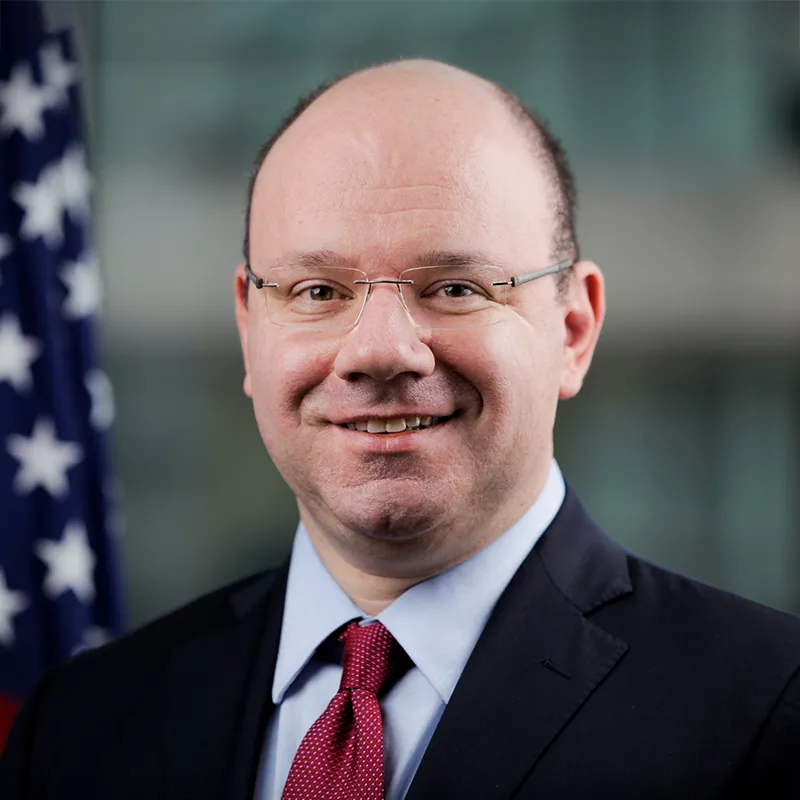
A Front Line against Cybercrimes
With increased digitization in legal work comes increased risk from cybercriminals, whether an organization is small or large, for profit or nonprofit. In the ABA’s 2021 Legal Technology Survey Report, 25 percent of respondents reported that their law firms had experienced a data breach at some time. That risk, of course, also extends to companies that lawyers work with.
“Blackbaud, for example, had a data attack two years ago,” says Julie Chen, of Share Our Strength. “We work with Blackbaud; several nonprofits use it to deal with their data. So that was very much something that could affect us.” She says Share Our Strength relies on its partners to provide best-in-class protections and expertise to ensure that a breach does not occur.
At the Consumer Financial Protection Bureau, which receives complaints from the public as well as sensitive information from financial institutions, Bressler says they emphasize training staff to recognize and avoid phishing attacks, and generally maintain the integrity of the agency systems against hackers.
“Cybersecurity is top of mind and has been a priority of every director of the agency who has been here.”
The risk is not limited to data but also includes email, internet, social media, employee privacy, and other areas. According to ABA Model Rules, attorneys have both ethical and common law duties to “take competent and reasonable measures to safeguard information relating to clients.” That means working closely with IT departments to prevent and respond to breaches as well as choosing the best tools to guard against cybercrimes.
“Cyber definitely touches everything,” says Wilson, of Dow. “So to the extent that we are in crisis management and crisis avoidance, we’re definitely focused on cybersecurity. It’s also an area that doesn’t sit still, so there’s both the substantive work of making sure that we’re protecting the company and that we’re taking other aspects of cyber regulation into consideration, things like data privacy. And, again, it’s being part of that team that responds if and when you do have an issue.”
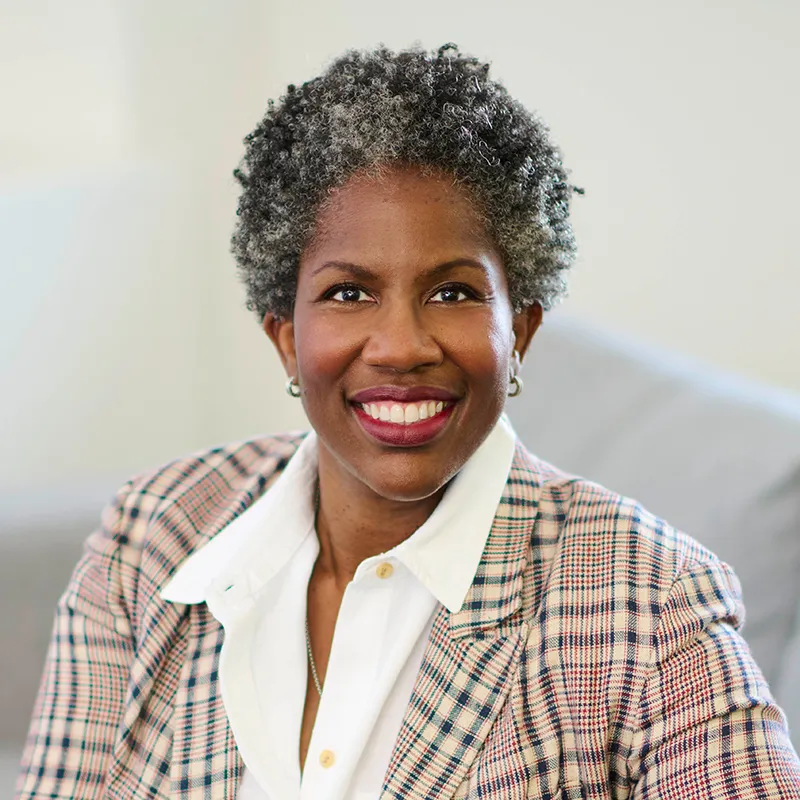

A Socially Conscious Orientation
Among the newest dimensions of the GC’s role within an organization are environmental, social, and governance (ESG) criteria. The focus on ESG in the past 20 years is a response to demands from employees, customers, stockholders, donors, and others that organizations do well by doing good. If a GC is lucky, those criteria align with the organization’s mission.
“What Dow has been able to say and do on circularity and plastics waste and setting net zero emission targets—those are the types of broader societal issues that are going to line up squarely with our strategy,” says Wilson. “We’re going to make a statement, and we’re going to show action against it.”
For example, the company could become part of the solution to the problem of plastic waste not only by making Dow’s plastics more recyclable but also by investing in a startup whose goal is to develop innovative ways to collect waste and recycle it for cleaner, more renewable feedstocks.
Beyond environmental goals, social goals such as human rights and diversity, equity, and inclusion (DEI) have become increasingly important for many organizations.
“It is vital for in-house lawyers who are in leadership positions to ensure that they understand DEI challenges,” says Ann Chen, of TransUnion, “and work closely with their leaders and subject matter experts to ensure that DEI is incorporated in all aspects of management, including with talent, culture, internal development promotion, and with outside counsel. DEI shouldn’t be considered a side issue to manage but part of our day-to-day work and goals.”
The social and political upheavals of the past few years underscore the social component of ESG. Mayes, of the New York Public Library, notes that both Delta Airlines and Coca-Cola took a public stance against a restrictive voting rights bill in Georgia last year following a backlash from activists—and from customers.
“In the past, companies would have never taken a position on voting rights,” she says. “But now, people are knocking on the door saying, ‘So, what is your position on the voting rights bill?’ They can’t say, ‘No comment; we just make carbonated drinks.’”
Such issues aren’t limited to for-profit businesses. The mission of the library, Mayes says, bleeds into social issues. And this includes the controversial topic of banned books.
In April 2022, the New York Public Library announced that it had negotiated agreements with publishers to make four controversial books, including Catcher in the Rye, available for free throughout the United States using the library’s SimpleE reader app. The library wasn’t charged the typical license fees for a limited period of time.
Calling it the Books for All Campaign, “We wanted to underscore how absolutely critical access to information and knowledge is to the mission of the institution and a functioning democracy,” Mayes says.
A kind of precursor to ESG are corporate social responsibility goals such as the Sullivan Principles, which were related to ending apartheid in South Africa. Shaughnessy, of DocuSign, says a company he worked for in the 1980s and 1990s embraced the Sullivan Principles; however, social issues were generally not part of the GC conversation when he started as a lawyer.
“The political environment is different than it was 20 or 30 years ago; the expectations of companies are different than they were 20 or 30 years ago,” he says. And the GC often has a strong voice in these discussions because they involve what lawyers do best: identifying issues and themes and balancing competing considerations.
As GC within a social justice organization, Julie Chen says Share Our Strength can be on the receiving end of ESG. “The for-profit organizations who have ESG as a component of their governance will look to us to fulfill some of their ESG mandates: addressing hunger, addressing poverty, and things like that. So when we work with corporate partners, we will work with their ESG group.”
While it seems all well and good to promote social responsibility, companies do risk offending some customers, employees, stockholders, donors, and others in taking a position.
“The social and cultural environment in which companies are operating right now is really, really fraught,” says BuzzFeed’s Powell. “As a CLO, navigating through that and helping steer our executive leadership will be a challenge in the near term.”
However, she adds that these issues can’t simply be swept under the rug. “The increase in corporate activism is spawned by increasing extremism in the political arena. Companies feel forced to become involved because the impact of the social and cultural upheaval is so clear and so apparent.”


